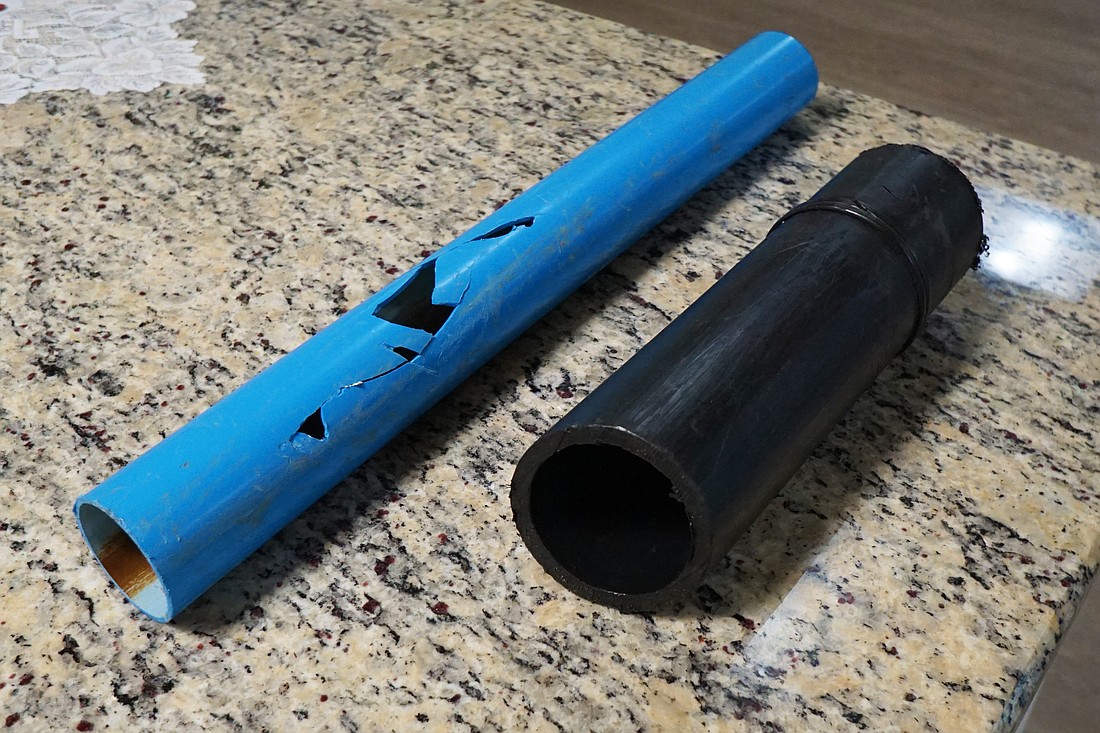- May 10, 2025
-
-
Loading

Loading

Chairman of the Water Committee Tom Freiwald said Spanish Main Yacht Club was a 55-plus community in both the age of its residents and potable water lines.
Due to repeated system failures, the Spanish Main Yacht Club had to replace its potable water lines, which were original to the condominium's construction in 1966.
“This is the biggest infrastructure project, by far, we’ve ever attempted,” Freiwald said. He was involved with the project from early on.
The new water lines cost about $1 million and took about 10 years altogether.
On Feb. 7, board members of the condominium marked the official completion of the project, in a celebration for the entire community.
Members of the community were the ones who lived through years of water issues and showed support. The project involved every one of the 212 units and over 400 residents.
“This was unanimous that we had to do this from the very beginning,” Freiwald said.
Spanish Main Yacht Club is the oldest condominium community on Longboat Key, according to Freiwald.
After years of issues with the water system, the system’s age began to show.
“We had many, many years of failures. Always in the middle of the night,” Freiwald said.
The system was failing on its own. An old, blue piping system was installed along with the condominiums. The water lines were an early form of polyvinyl chloride, or PVC.
Issues with the pipes were compounded whenever underground work took place. Whether it was to investigate problems with the water pipes or cable providers working on underground utility lines, Freiwald said the blue PVC pipes were easy to break.
Even heavy trucks driving over spots with fragile pipes underneath caused cracks.
Sometimes it took months to locate the issues, said Freiwald and fellow resident Jim Darden.
When issues were located, the first step was to shut off the water to fix the problem. That was tricky with control valves that were either difficult to find or not working properly, according to Freiwald.
That meant the nearly 5,000 feet of water lines needed to all be shut off whenever repairs were necessary.
Then, when working on repairs, muddy water often crept into the pipes due to the area’s high groundwater level.
“After many years of the sanitary problem with the dirty water and the plugging up of faucets in the house, and the inconvenience … the board said we really need to tackle this issue,” Freiwald said.
Darden said the project was also intended to improve the efficiency of the community’s water system.
“A big part of it was to make sure that we weren’t wasting water,” Freiwald said.
During less busy times of year, Freiwald said members of the board would check the condominium's water meter. In the middle of the night, sometimes up to 12 gallons of water were being used a minute.
That was an issue, Freiwald said. It was more than just people’s ice makers running in the middle of the night.
Realizing the community’s high water usage, board members said the community held workshops and information sessions to try to educate residents about saving water.
“I think that education in itself opened a lot of peoples’ eyes to what they might be able to do differently to help the community and help the savings of water,” Pat Knudsen, who was also a part of the project, said.
But reducing personal water usage wouldn’t solve all the problems. The board then decided to embark on replacing the potable water lines about 10 years ago.
The first couple years consisted of identifying the extent of the problem and what needed to be done in construction. After that, the board worked on finding an engineering team.
Over the span of three years, the condominium association collected funds through increasing the monthly dues for residents. Residents were largely on board.
“We funded this entirely,” Freiwald said. “There was no special assessment because we had enough in the reserves. And not one cent of taxpayer money was used.”
After securing the funds, the board found a construction company, Florida Piping Solutions.
But once everything was ready, Florida Power & Light’s undergrounding project also got underway. The contractor that Spanish Main Yacht Club hired said it wasn’t possible for the projects to be worked on at the same time, since it was difficult to schedule times in between FPL’s work.
That delayed the project until about a year ago, when construction began.
Now, the new, more efficient potable water system has 24 valves in a loop system. There aren’t any joints in the high-density polyethylene pipes. Everything is fused together.
“So now if we ever have to shut the water off, we can isolate only the area that’s in trouble and not all 212 units,” Freiwald said.
Freiwald and others expressed their gratitude toward the contractor that worked well with the community, and to the town’s Public Works Department with whom the condominium association worked closely with.